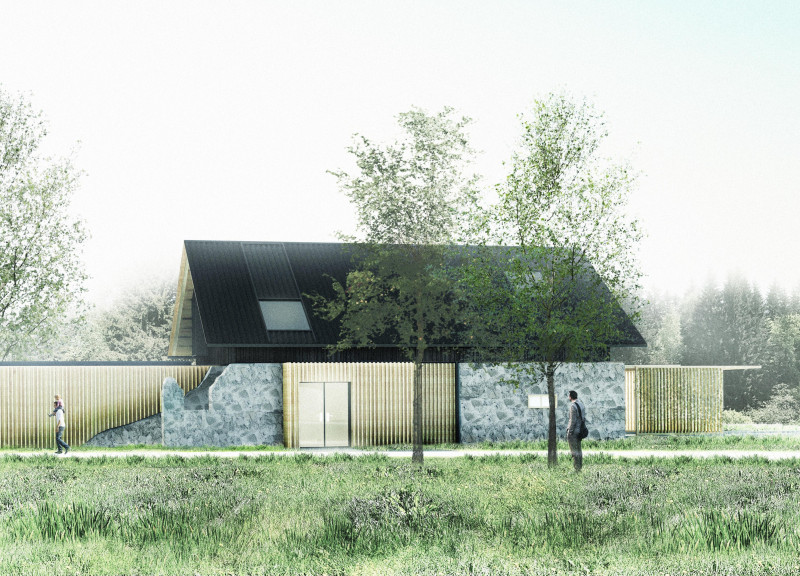5 key facts about this project
The Teamakers Guest House is located in Latvia and serves as a space focused on tea making. It is designed to provide both functional areas for preparation and welcoming spots for social interaction. The overall concept revolves around a linear journey that traces the process of tea, from gathering leaves to experiencing the final brew. This thoughtful approach creates an open activity space that not only encourages engagement with tea making but also connects with the surrounding natural landscape.
Conceptual Framework
The design centers on a long, open space that embodies the tea-making journey. The central area acts as a gathering point for guests, facilitating the art of preparation and enjoyment. By allowing openings at both ends, the design merges indoor and outdoor experiences. This connection enhances the idea of tea as a cultural practice that thrives in both shared spaces and tranquil environments.
Materiality and Structure
Material choices play an important role in expressing the character of the guest house. The original stone walls are preserved, reflecting the historical context of the location. The new addition honors this heritage by incorporating the roof shape of the earlier barn, thus maintaining visual continuity. A concrete ground floor provides a solid foundation to support the building while complementing the stone walls. The use of wood adds warmth and links the design to traditional Latvian architecture.
Spatial Organization
The layout of the guest house demonstrates a clear approach to spatial organization. Operable partitions on the ground level offer flexibility, allowing the space to adapt for various uses such as workshops or communal gatherings. This adaptability fosters an inviting environment that encourages participation in the tea-making process, as well as moments of calm and reflection.
A key feature of the guest house is its ability to balance human activity with the natural surroundings. The design invites light and fresh air into the central hall, creating a peaceful atmosphere. This attention to the relationship between indoor and outdoor spaces culminates in a design that is user-friendly and culturally aware, allowing guests to fully appreciate the nuances of tea making.





















































